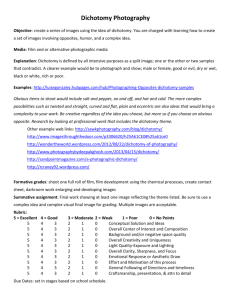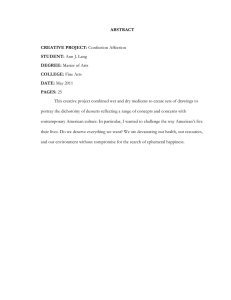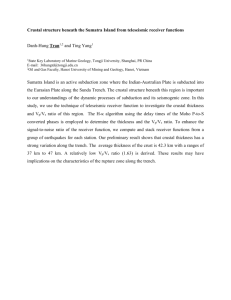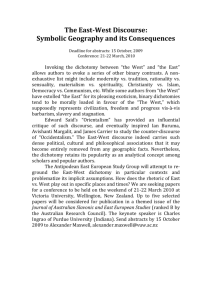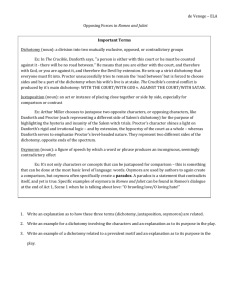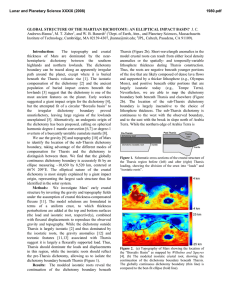Jeffrey C. Andrews-Hanna & Maria T. Zuber
advertisement
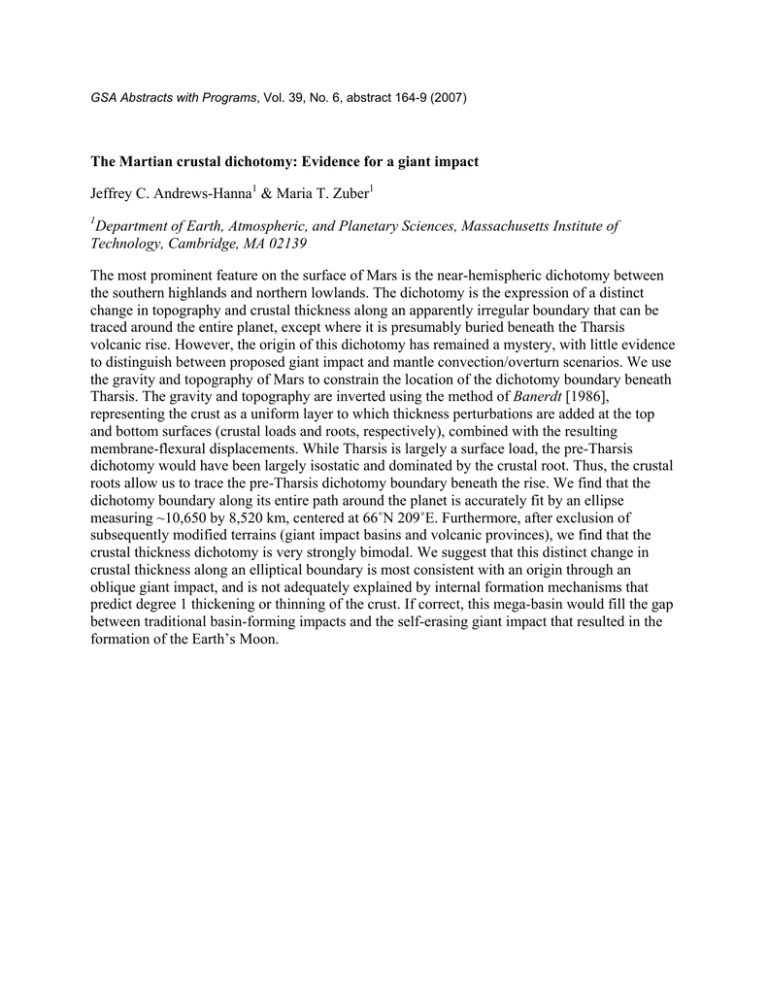
GSA Abstracts with Programs, Vol. 39, No. 6, abstract 164-9 (2007) The Martian crustal dichotomy: Evidence for a giant impact Jeffrey C. Andrews-Hanna1 & Maria T. Zuber1 1 Department of Earth, Atmospheric, and Planetary Sciences, Massachusetts Institute of Technology, Cambridge, MA 02139 The most prominent feature on the surface of Mars is the near-hemispheric dichotomy between the southern highlands and northern lowlands. The dichotomy is the expression of a distinct change in topography and crustal thickness along an apparently irregular boundary that can be traced around the entire planet, except where it is presumably buried beneath the Tharsis volcanic rise. However, the origin of this dichotomy has remained a mystery, with little evidence to distinguish between proposed giant impact and mantle convection/overturn scenarios. We use the gravity and topography of Mars to constrain the location of the dichotomy boundary beneath Tharsis. The gravity and topography are inverted using the method of Banerdt [1986], representing the crust as a uniform layer to which thickness perturbations are added at the top and bottom surfaces (crustal loads and roots, respectively), combined with the resulting membrane-flexural displacements. While Tharsis is largely a surface load, the pre-Tharsis dichotomy would have been largely isostatic and dominated by the crustal root. Thus, the crustal roots allow us to trace the pre-Tharsis dichotomy boundary beneath the rise. We find that the dichotomy boundary along its entire path around the planet is accurately fit by an ellipse measuring ~10,650 by 8,520 km, centered at 66˚N 209˚E. Furthermore, after exclusion of subsequently modified terrains (giant impact basins and volcanic provinces), we find that the crustal thickness dichotomy is very strongly bimodal. We suggest that this distinct change in crustal thickness along an elliptical boundary is most consistent with an origin through an oblique giant impact, and is not adequately explained by internal formation mechanisms that predict degree 1 thickening or thinning of the crust. If correct, this mega-basin would fill the gap between traditional basin-forming impacts and the self-erasing giant impact that resulted in the formation of the Earth’s Moon.
